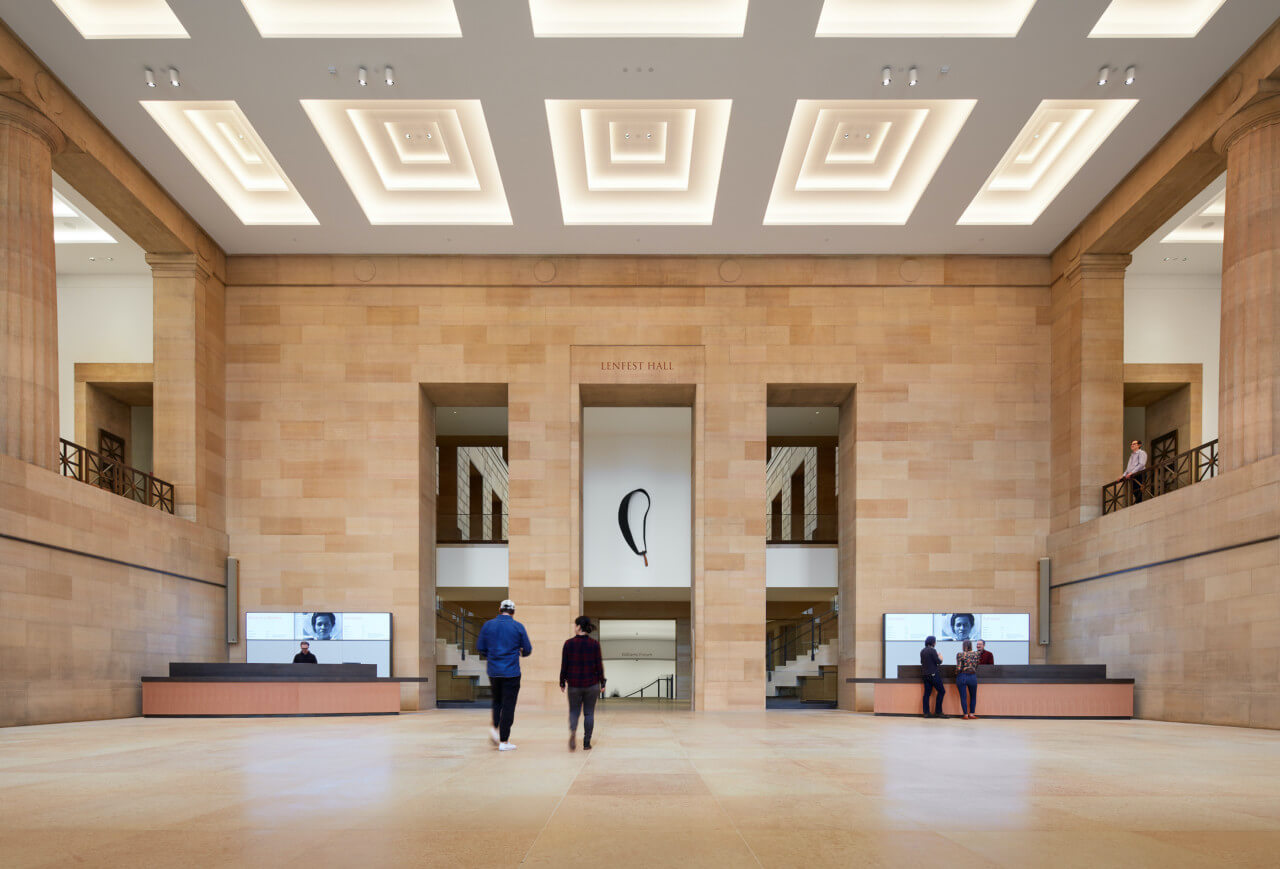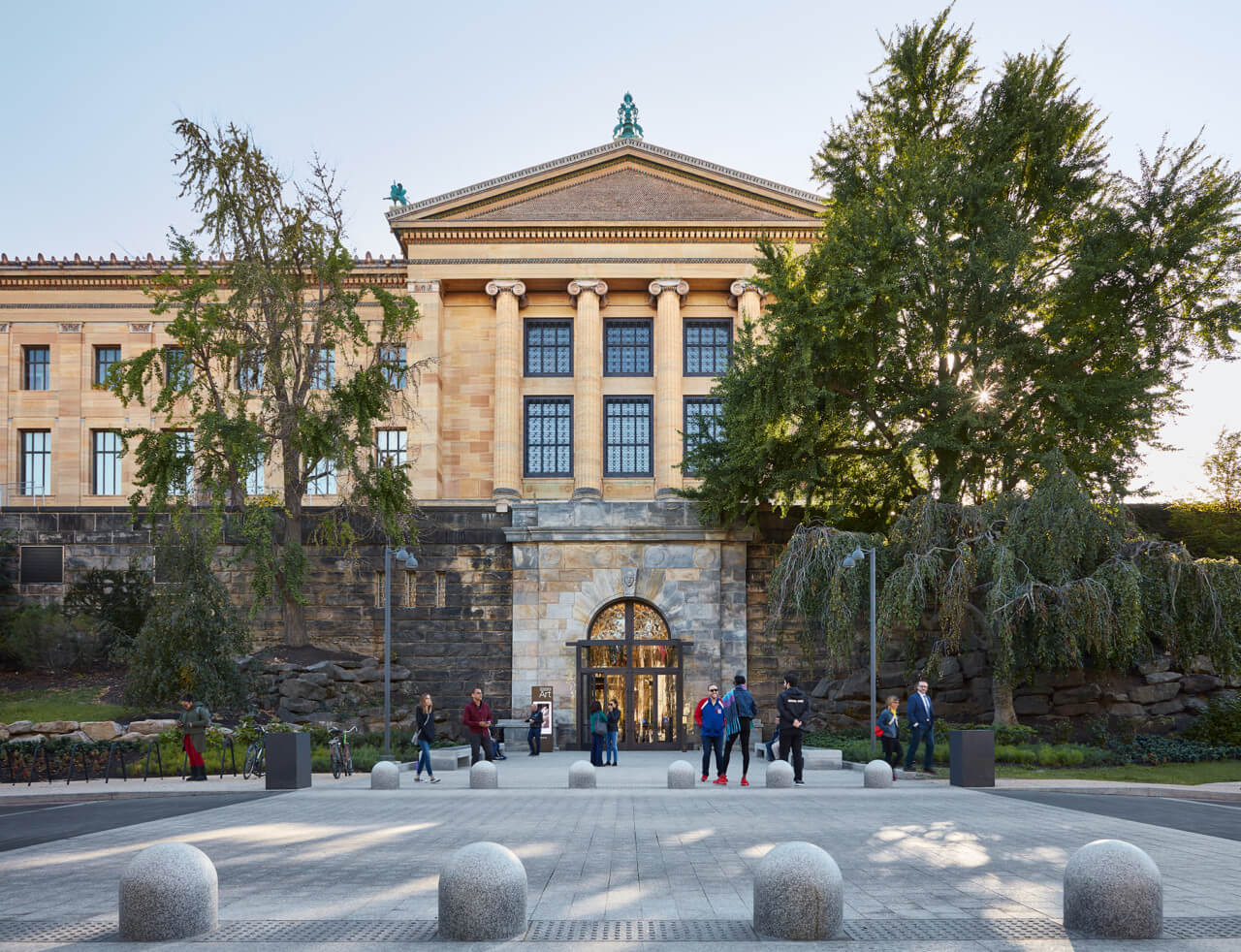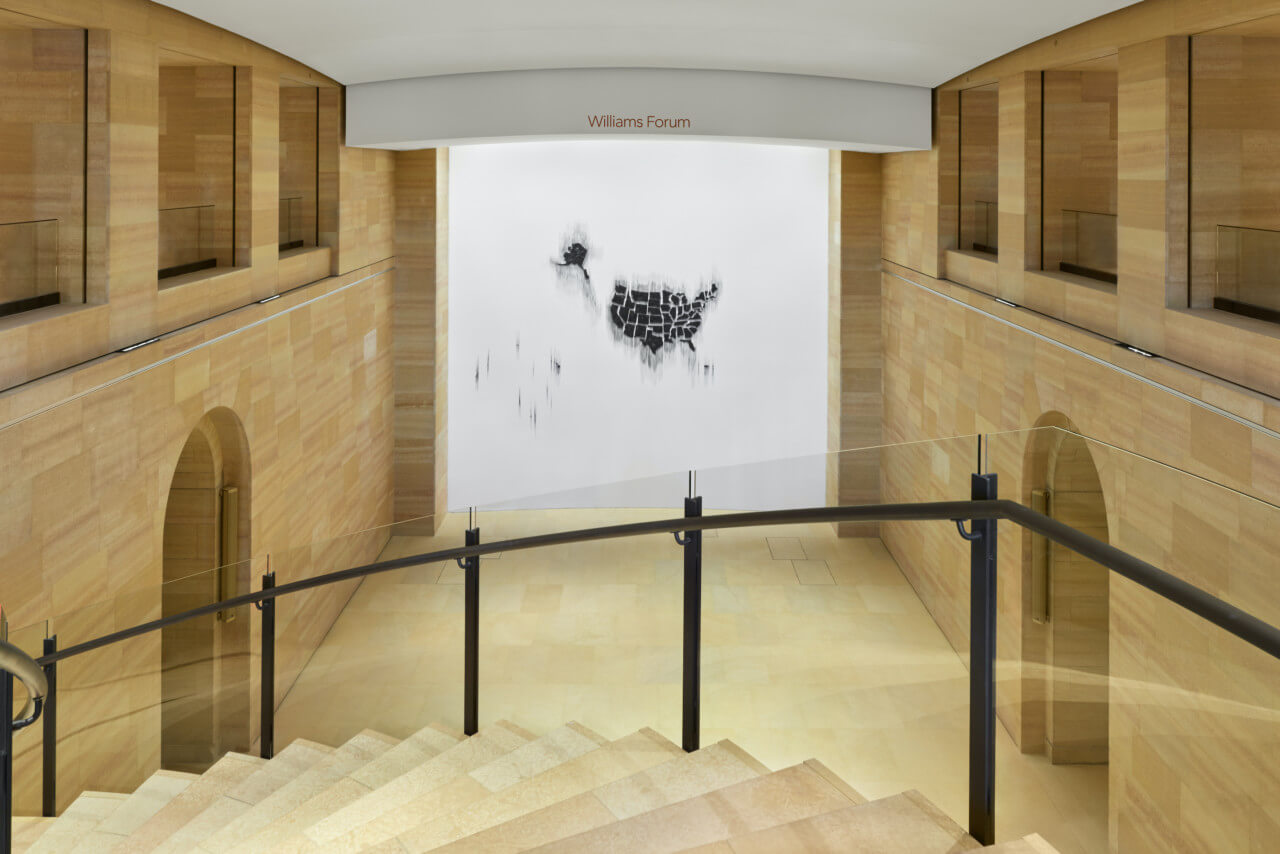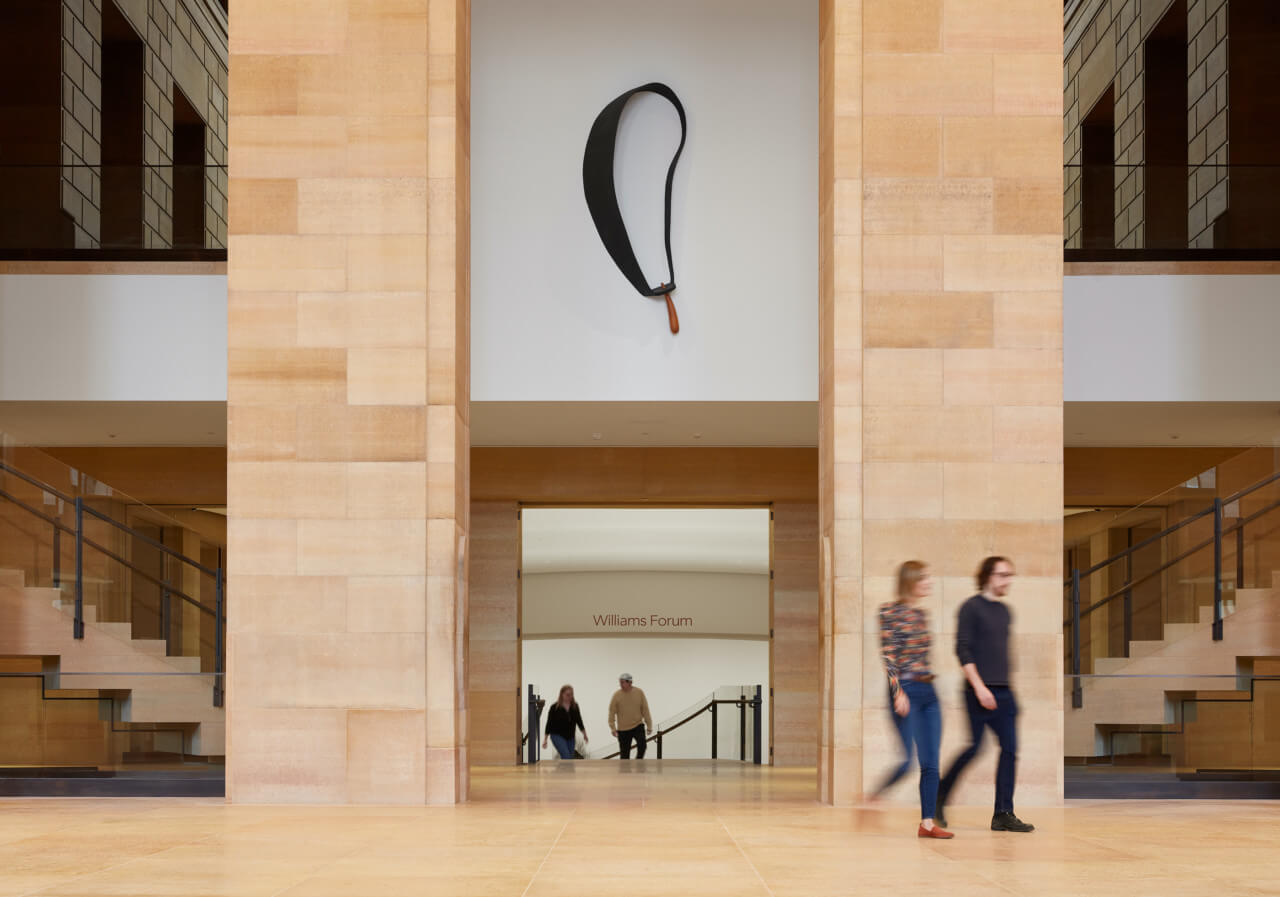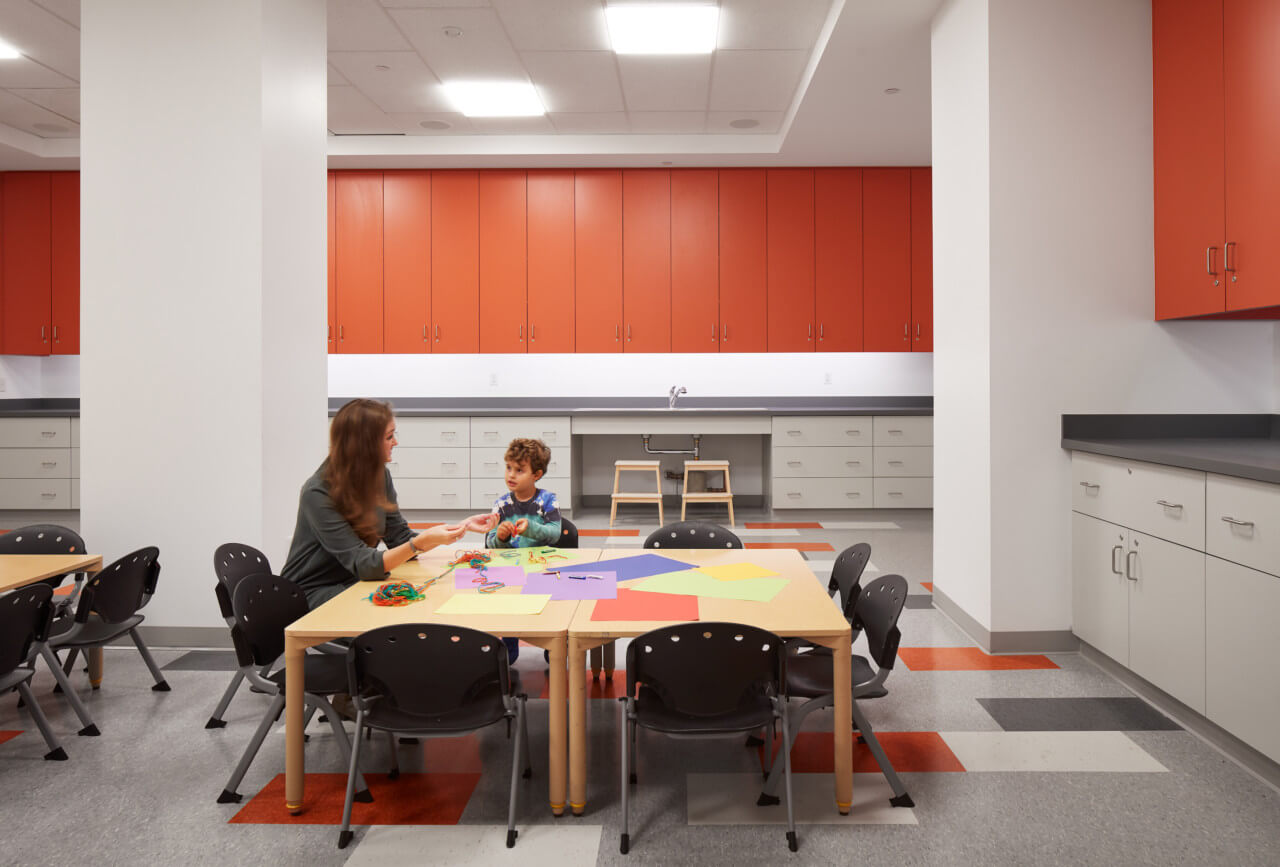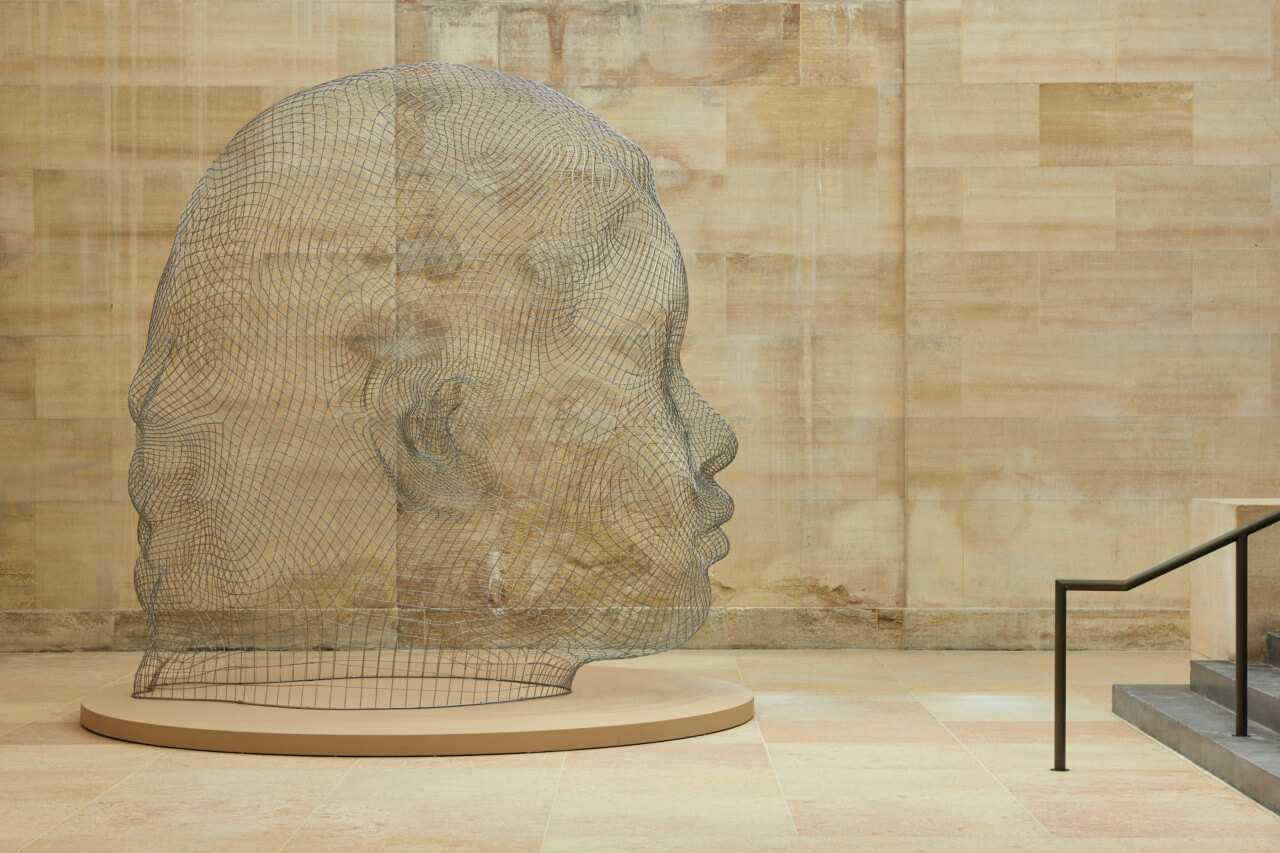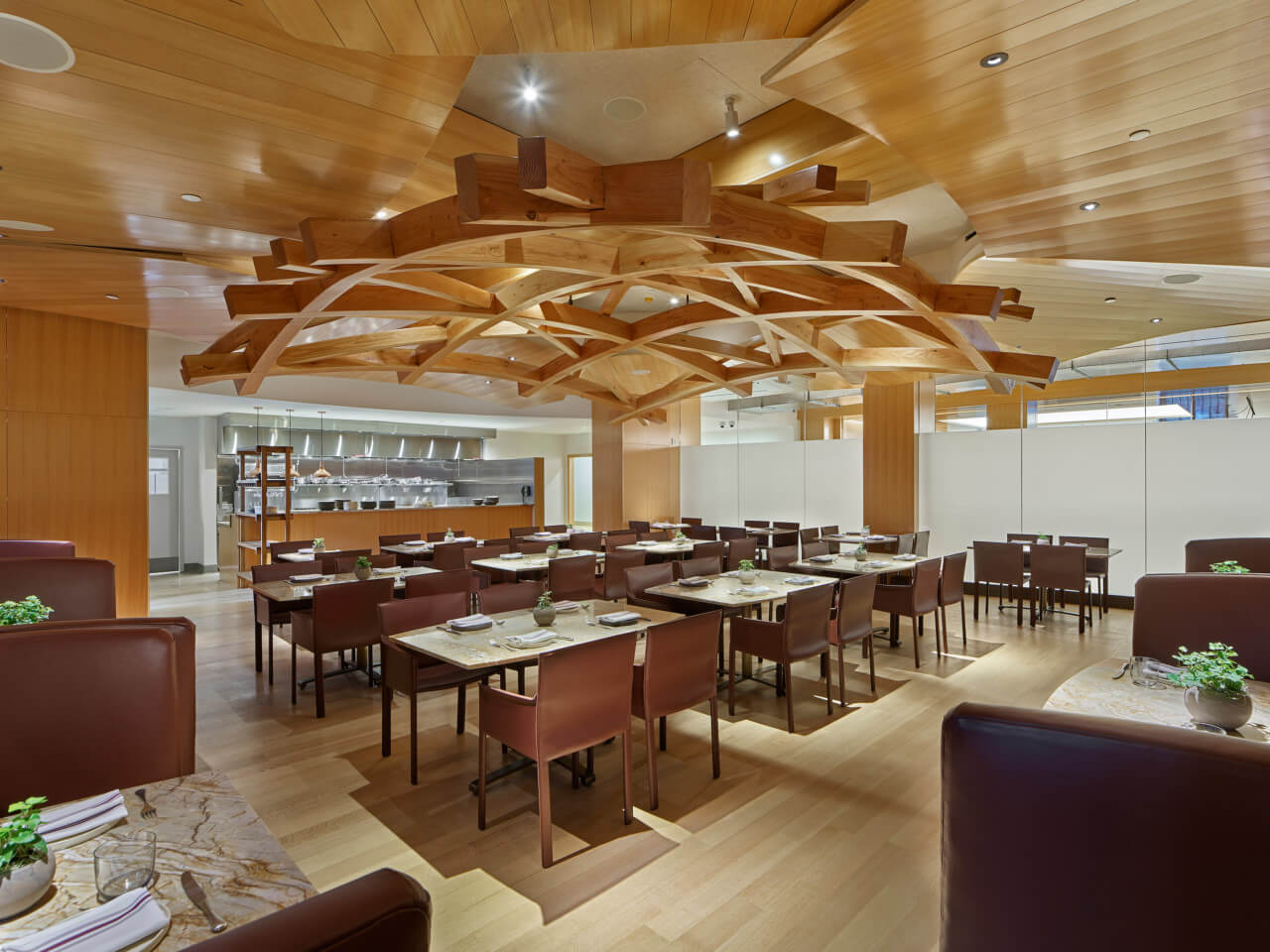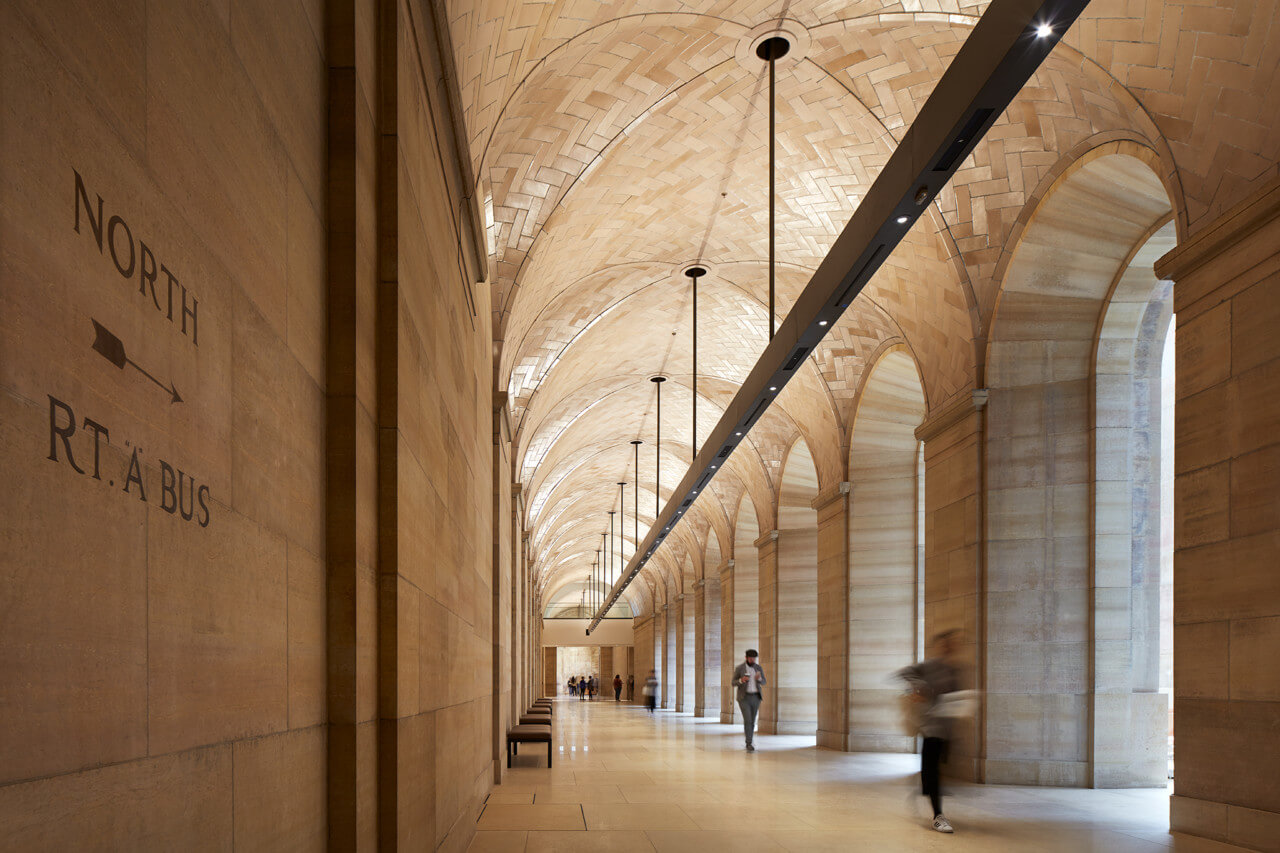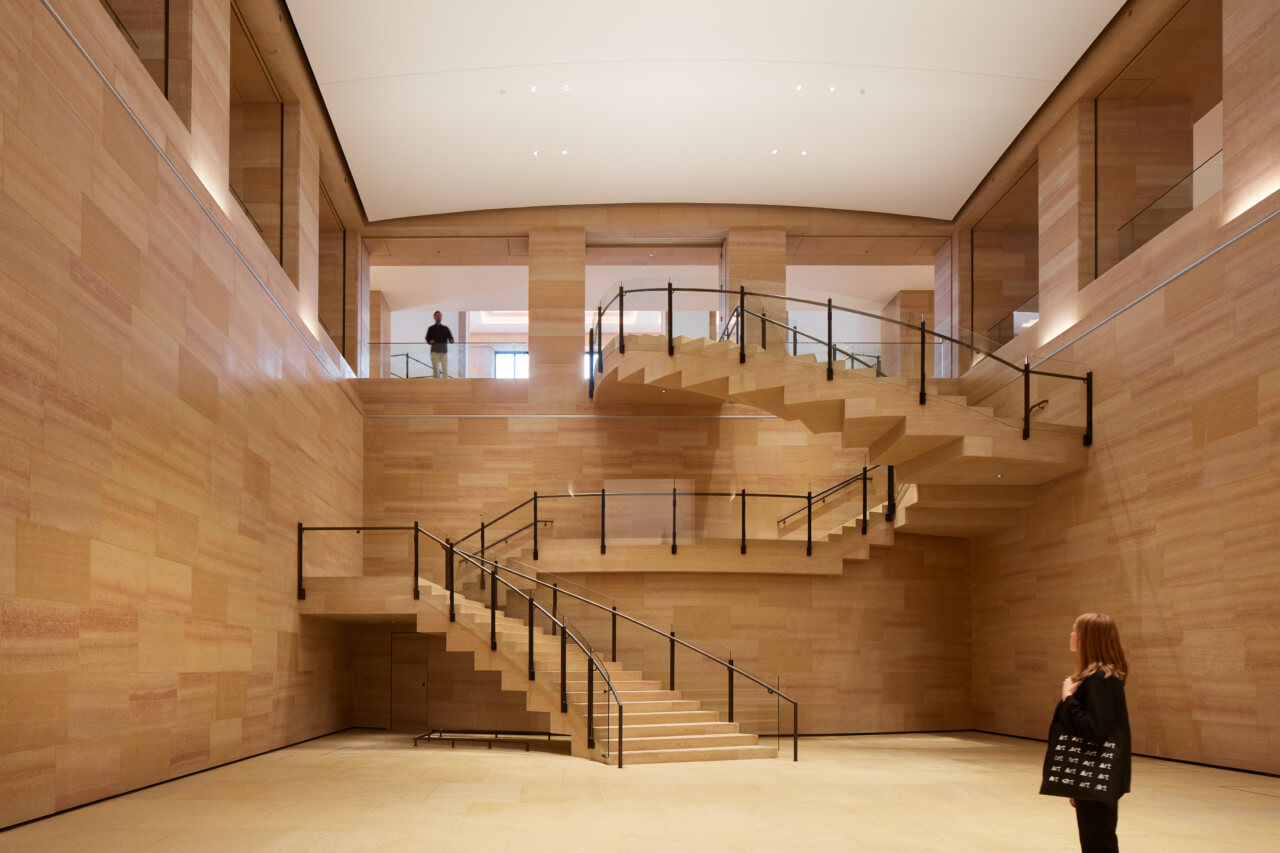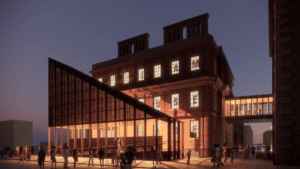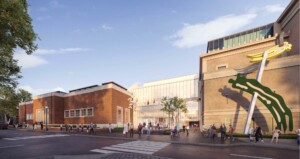Today is the day: The Philadelphia Museum of Art has formally pulled back the curtains on a series of major, yet ultimately subtle, renovations led by Frank Gehry of the institution’s historic 1928 main building at the foot of Benjamin Franklin Parkway. The $233 million overhaul, completed as part of the museum’s Core Project, adds a total of 90,000 square feet of space within the museum and marks the conclusion of a painstaking four-year construction period and many years of design and planning before that.
As previously detailed by AN leading up to today’s unveiling, major components of the Core Project include: A rebuilt, renamed, and more accessible West Terrace, now known as the Robbi and Bruce Toll Terrace; a refreshed Lenfest Hall, the soaring space that serves as the main western entrance to the museum and now features new coffered ceilings, restored columns, a newly installed wall sculpture by Martin Puryear, and Gehry Partners-designed admissions desks; a newly created space named the Williams Forum that replaces the old, 1950s-era museum auditorium and will be used for large-scale installations and public programming, and the completed Vaulted Walkway, a 640-foot-long corridor that spans the length of the museum that has now been fully reintroduced after being off-limits to the public for decades.
As for Lenfest Hall, Inga Saffron noted in her assessment for the Philadelphia Inquirer, conspicuously absent from the space following the renovation are the “brightly colored furniture and ceiling coffers” installed during a 1989 Venturi, Scott Brown-led renovation. “Given the importance of Venturi, Scott Brown to architectural history, and to Philadelphia, it’s a shame that some vestige of their work wasn’t retained in the space,” she wrote.
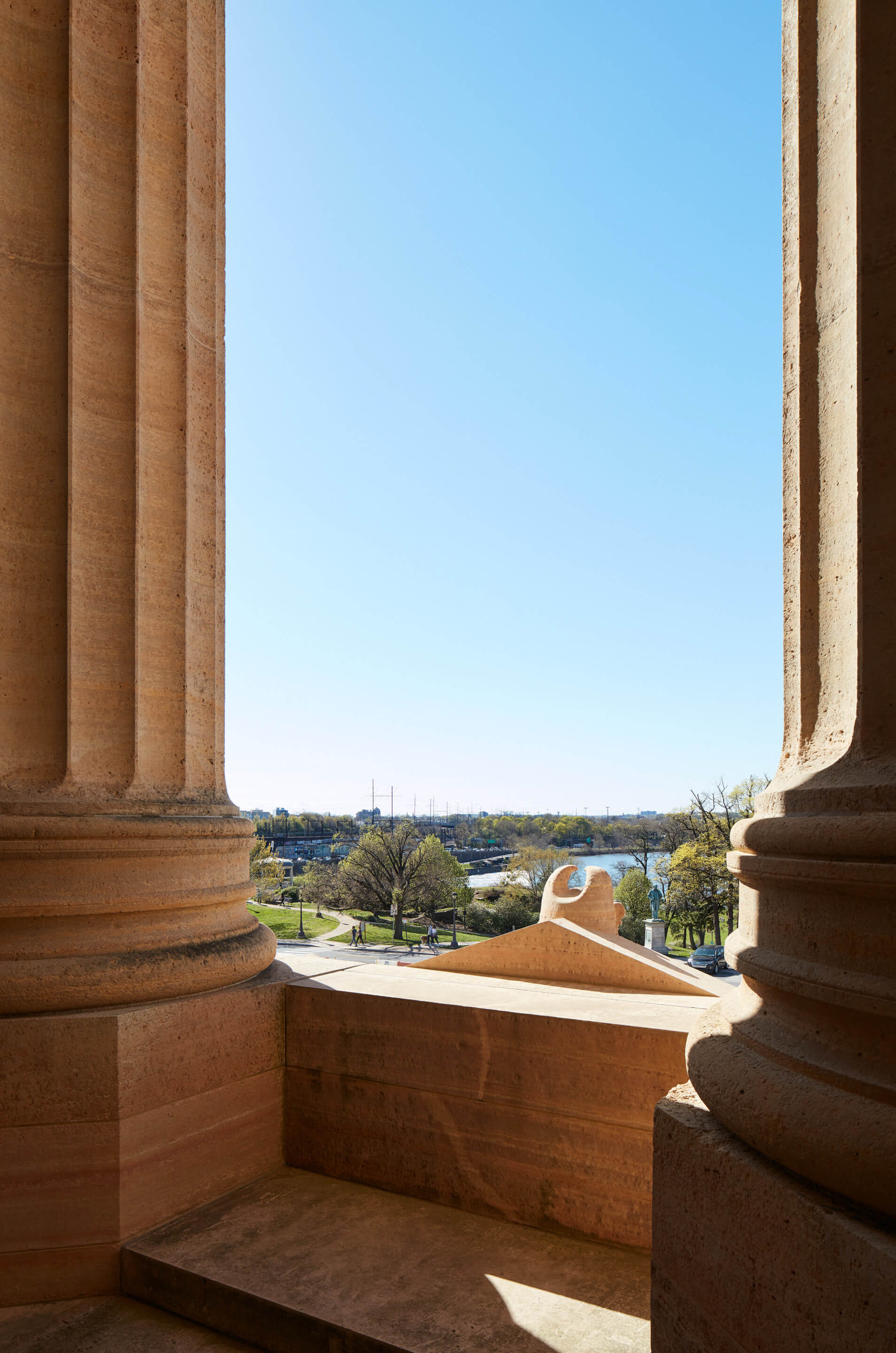
Additionally, areas previously dedicated to administrative purposes along with old restaurant and retail spaces have been transformed into two new mirroring gallery suites, the Robert L. McNeil, Jr. Galleries and the Daniel W. Dietrich II Galleries, together totaling more than 20,000 square feet. The Core Project also entailed a sweeping number of infrastructural upgrades meant to bring the aging building up to 21st-century efficiency and accessibility standards.
While some of these transformed spaces are new new and might surprise (and potentially disorient) even the most dedicated PMA patrons, a material familiarity (and a somewhat surprising restraint considering the involvement of Gehry, who, as noted by Saffron, delivered a provocation-free project in which “every inch” is “rendered with elegance and sensitivity”) is present throughout. This was achieved in part by the use of the same materials, including Minnesota quarry-sourced Kasota limestone, in the renovation that were used in the construction of the sprawling, Greek Revival building 93-some years ago.
Said Gehry, who celebrated his 92nd birthday in February: “The goal in all of our work at the Philadelphia Museum of Art has been to let the museum guide our hand. The brilliant architects who came before us created a strong and intelligent design that we have tried to respect, and in some cases accentuate. Our overarching goal has been to create spaces for art and for people.”
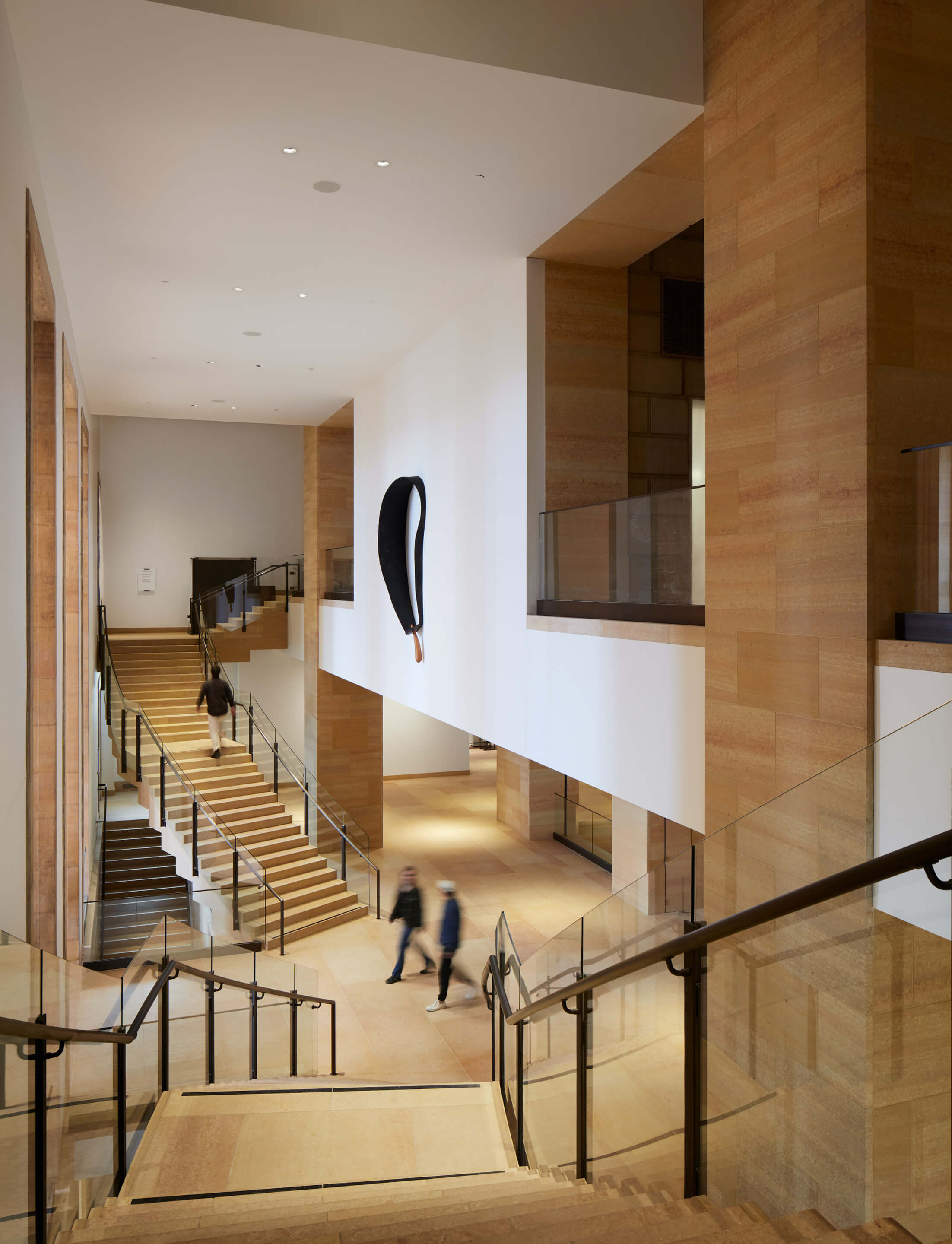
To celebrate the completion of the overhaul, the museum will operate on a pay-what-you-wish basis starting today through May 10, which is the date the museum first opened its doors in 1877 at its original home: the Beaux-Arts Memorial Hall (now the Please Touch Museum) located across the Schuylkill River in the Centennial District of Fairmount Park. The debut of Senga Nengudi: Topologies, the first major special exhibition to be presented at the mostly dormant-due-to-COVID museum in over a year, coincides with the unveiling. The Rodin Museum, operated as an annex of the Philadelphia Museum of Art, has also reopened to the public with health and safety precautions in place for the first time since March 2020.
AN will publish a full review of Gehry’s dramatic yet judicious reimagining of the Philadelphia Museum of Art in the coming days.






